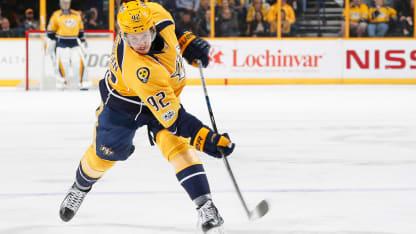The Nashville Predators might have defeated the Pittsburgh Penguins in the 2017 Stanley Cup Final if not for the absence of their No. 1 center, Ryan Johansen, who required emergency leg surgery after Game 4 of the Western Conference Final against the Anaheim Ducks.
Johansen is one of the most versatile players in the NHL, and his contributions begin right from the moment the puck is dropped every shift he's on the ice.
In traditional terms, Johansen had a faceoff winning percentage of 54.5 percent last season, which was tied for 32nd in the NHL among those who took at least 100 draws. However, statisticians tend to evaluate faceoff performance using the Net Shots Post Faceoff (NSPF) statistic developed by Craig Tabita of Puck Base. From this perspective, the Predators got an extra 52.16 shot attempts within 10 seconds of Johansen's faceoffs at 5-on-5 last season relative to how the League-average center would have performed in the same number of offensive, defensive and neutral-zone draws. That placed Johansen first in the NHL.

